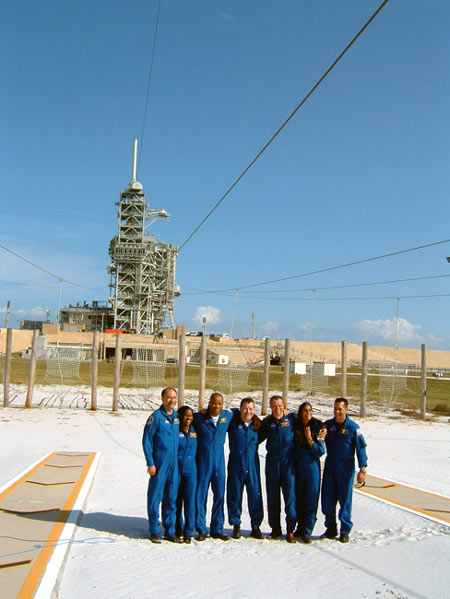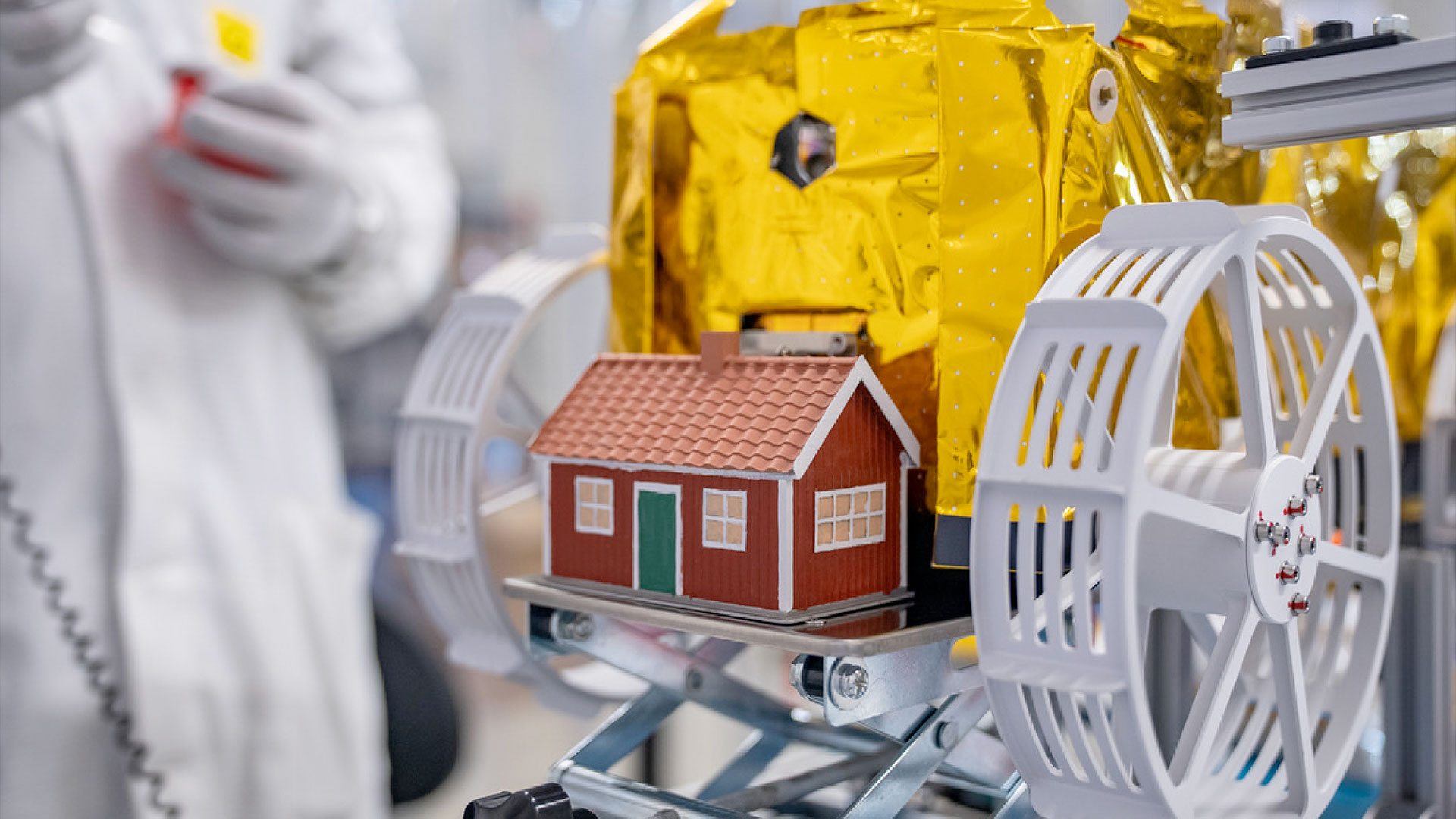Discovery Shuttle Astronauts Train for Night Launch in Daylight

CAPE CANAVERAL, Fla. - The clock is ticking down towards a mock launch day for seven shuttle astronauts training for a Dec. 7 flight to the International Space Station (ISS).
The countdown began at about 8:00 a.m. EST (1300 GMT) here at NASA's Kennedy Space Center spaceport as the STS-116 astronaut crew prepares to launch aboard NASA's Discovery shuttle.
"We're going to get into the vehicle tomorrow and get a chance to practice what we're going to experience in a couple of weeks," STS-116 shuttle commander Mark Polansky told reporters at Discovery's Pad 39B launch site.
Polansky and his crewmates are currently slated to launch spaceward at about 9:36 p.m. EST (1436 Dec. 8 GMT) to deliver a new segment of the ISS and rewire the station's power grid. But despite their night flight plan-NASA's first since the 2003 Columbia accident-the astronauts are rehearsing emergency drills during the day.
"The reality is that the displays are the same, it's just lighting so we just adjust that," said Discovery shuttle pilot William Oefelein. He added that the only difference to launch training for night and day liftoffs included sessions in a darkened cockpit simulator and slight changes to post-liftoff fuel tank photography tasks. "Everything else we do, it doesn't matter whether it's day or night."
NASA launched its first three post-Columbia accident shuttle missions in broad daylight to evaluate safety modifications to the orbiters' external fuel tank after investigators traced the 2003 tragedy to tank foam debris. A decision on whether to implement more changes is expected Thursday, NASA officials told SPACE.com.
The STS-116 crew will don their bright orange launch suits early Thursday and climb into Discovery's cockpit and middeck as part of their Terminal Countdown Demonstration Test (TCDT) training.
Get the Space.com Newsletter
Breaking space news, the latest updates on rocket launches, skywatching events and more!
Polansky and Oefelein will launch towards the ISS alongside mission specialists Nicholas Patrick, Robert Curbeam, Joan Higginbotham, Sunita Williams and European Space Agency (ESA) astronaut Christer Fuglesang-Sweden's first astronaut to fly.
"I've never been so close to a shuttle that's going to launch," said Fuglesang, who has been an ESA astronaut since 1992 but is making his first spaceflight wit STS-116. "It feels fantastic."
Williams will stay aboard the ISS after the 12-day STS-116 mission as a member of its Expedition 14 crew-commanded by NASA astronaut Michael Lopez-Alegria-which filmed the first-ever live high-definition television broadcast earlier today.
Returning to Earth aboard Discovery in Williams' place will be space station flight engineer Thomas Reiter-also an ESA astronaut-who arrived at the ISS during Discovery's STS-121 mission in July. Russian cosmonaut Mikhail Tyurin completes the Expedition 14 crew.
"Well, 116 is sort of opening up the door to what we're going to be doing," Williams said. "I can't stop forgetting that I'm going to be up there for six months."
- Next Space Shuttle Crew Prepares for Launch Rehearsal
- Mission Discovery: The ISS Rewiring Job of NASA's STS-116
- Complete Space Shuttle Mission Coverage
- Complete Coverage: ISS Expedition 14
- The Great Space Quiz: Space Shuttle Countdown
- All About the Space Shuttle
Join our Space Forums to keep talking space on the latest missions, night sky and more! And if you have a news tip, correction or comment, let us know at: community@space.com.

Tariq is the Editor-in-Chief of Space.com and joined the team in 2001, first as an intern and staff writer, and later as an editor. He covers human spaceflight, exploration and space science, as well as skywatching and entertainment. He became Space.com's Managing Editor in 2009 and Editor-in-Chief in 2019. Before joining Space.com, Tariq was a staff reporter for The Los Angeles Times covering education and city beats in La Habra, Fullerton and Huntington Beach. In October 2022, Tariq received the Harry Kolcum Award for excellence in space reporting from the National Space Club Florida Committee. He is also an Eagle Scout (yes, he has the Space Exploration merit badge) and went to Space Camp four times as a kid and a fifth time as an adult. He has journalism degrees from the University of Southern California and New York University. You can find Tariq at Space.com and as the co-host to the This Week In Space podcast with space historian Rod Pyle on the TWiT network. To see his latest project, you can follow Tariq on Twitter @tariqjmalik.
